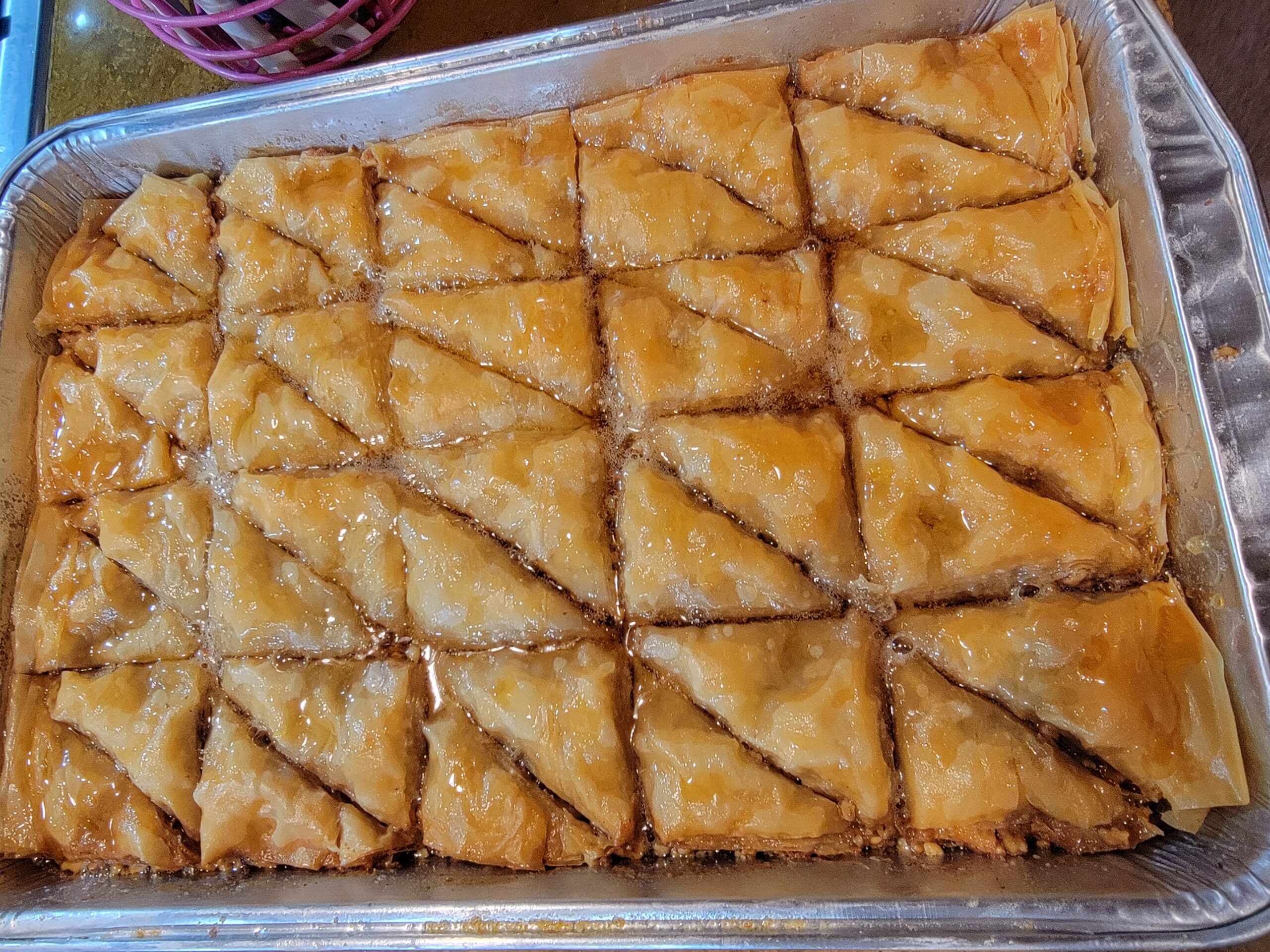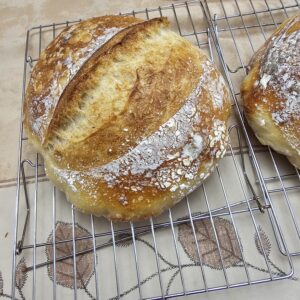Baklava
$35.00
Hold onto your hats for this one as it is a flavor journey across the world. Our normal offering is the Greek version but you can also request the Turkish variety.
When Dena makes Baklava there is a round of cheers heard in the house as this is a HUGE favorite. It’s crispy, light and flakey, drizzled in honey (local honey of course) and nutty – what’s more to love. It’s also very, very rich so a little goes a long way.
Want to impress some guests? That evil Mother-in-Law who is always criticizing you? Serve this little beauty up, maybe take credit for making it (we won’t tell) and get those accolades you’ve always been wanting to hear from her.
Description
Baklava is a rich, sweet pastry that is a hallmark of Middle Eastern, Mediterranean, and Balkan cuisines. It is renowned for its layers of thin, flaky dough, combined with a sweet, spiced nut filling, and finished with a sticky syrup or honey glaze.
Key Characteristics
- Texture and Layers:
- Phyllo Dough: Baklava is made with multiple layers of phyllo dough (also spelled filo), which is a very thin, unleavened dough. When baked, these layers become crisp and flaky.
- Nut Filling: The filling typically consists of finely chopped nuts such as walnuts, pistachios, or almonds, often mixed with sugar and spices like cinnamon.
- Flavor:
- Syrup or Honey Glaze: After baking, baklava is drenched in a syrup made from sugar, water, lemon juice, and sometimes honey, which soaks into the layers, adding sweetness and moisture.
- Spices and Aromatics: Common flavorings include cinnamon, cloves, and sometimes cardamom or rose water, giving the pastry a fragrant and complex taste.
- Appearance:
- Golden Brown: Baklava is typically baked until the phyllo layers are golden brown and crisp.
- Diamond or Square Pieces: It is usually cut into diamond or square shapes before baking, which allows the syrup to penetrate evenly.
Variations
Baklava varies by region and even by household, with numerous local adaptations:
- Turkish Baklava: Often uses pistachios and is known for its light and flaky texture.
- Greek Baklava: Commonly uses a mix of walnuts and almonds and is heavily spiced with cinnamon and cloves.
- Middle Eastern Baklava: May include rose water or orange blossom water for a distinctive floral note.
- Balkan Baklava: Often incorporates a variety of nuts and sometimes includes layers of semolina or custard.
Culinary Uses
Baklava is typically enjoyed as a dessert and can be served in various settings:
- Celebrations and Festivals: It is a traditional treat for religious holidays and special occasions such as Ramadan, Christmas, and weddings.
- Tea and Coffee Companion: Often served with tea or strong coffee, balancing the sweetness of the pastry with the bitterness of the drink.
- Gift and Hospitality: Frequently given as a gift or served to guests as a symbol of hospitality.
Baklava is cherished for its intricate texture, rich sweetness, and the balance of crunchy layers with moist, flavorful filling. Its preparation requires patience and precision, but the result is a sumptuous dessert that is enjoyed by many cultures around the world.
Only logged in customers who have purchased this product may leave a review.




Reviews
There are no reviews yet.